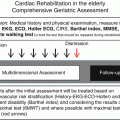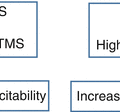© Springer International Publishing AG 2018
Stefano Masiero and Ugo Carraro (eds.)Rehabilitation Medicine for Elderly PatientsPractical Issues in Geriatricshttps://doi.org/10.1007/978-3-319-57406-6_5656. Healthcare Rehabilitation Organization for the Elderly in Greece
(1)
Faculty of Health & Caring Professions, Technological Educational Institute of Athens (ΤΕΙ-A), Athens, Greece
List of Acronyms
EKA National Center of Rehabilitation
EOPYY National Organization for Healthcare Services Provision
ESY National Health System
IKA Social Insurance Institution
KAAKYAMEA Center of Recovery, Rehabilitation and Social Support for People with Disabilities
KAAMEA Center of Rehabilitation of People with Disabilities
KAFKA Center for Recovery, and Physical and Social Rehabilitation
KAPI Open Care Center for the Elderly
KEKYKAMEA Centers for Social Support and Training for People with Disabilities
KEN Closed consolidated medical expenses based on diagnosis-related group (DRG)
LTC Long-term care
MoH Ministry of Health
OAEE Agency Insurance Self-Employed
OECD Organization for Economic Co-operation and Development
OGA Agricultural Insurance Organization
OPAD Agency Insurance Public Servants
PHC Primary healthcare
SEYYP Inspection, Ministry of Health and Social Community
56.1 Introduction
56.1.1 Greek Population’s Health Status
Greece, till the beginning of the twenty-first century, is facing a considerable aging of its population. According to the 2011 Population Census, the resident population of Greece is 10,816,286, of which 5,303,223 are male (49.0%) and 5,513,063 are female (51.0%) [1]. According to the data of the National Statistical Service of Greece, in 1991 the percentage of the population over 65 years old was near to 14%, while in 2001 this percentage rose to 17% and is expected to reach 24% by 2030. Approximately 18.7% of the Greek population is aged over 65 (OECD average 15%) with 4.3% of the population over 80 (OECD average 4%) [2].
The majority of patients consist of elderly people (over the age of 65). One out of two persons (49.7%) aged 15 years and over reports suffering from a chronic illness or health problem. In comparison to the other age groups, the elderly account for 60% of ambulance calls, 80% of homecare users, and 49% of inpatient care, and 85% of the patients are suffering from chronic diseases [3].
Self-perceived chronic morbidity and limitation in activities of the population on account of health problems are two basic health indicators. Ιn Greece, chronic illness or a health problem is reported by five out of ten women (54.1%) and by four out of ten men (44.8%). According to the data recorded, one out of two persons aged 65–74 years and almost eight out of ten persons aged 75 years and over are limited in their activities due to health problems [4].
56.2 Healthcare Organization in Greece
In 1983, Greece established a national health system (ESY) in which the Government must, under the Constitution, “guarantee that all citizens enjoy the benefits of a complete range of services of high quality, free at the point of service” (The Greek Constitution, 1975). The Greek health system is characterized as a dual system. The supply side is organized largely along Beveridge lines, with state-provided hospital care and a network of rural health centers covering almost one-third of the population. On the demand side, the system functions mainly along Bismarck lines, with health insurance provided traditionally by 39 health funds, up until 2012 when the various funds merged into one fund, called EOPYY (National Organization for Healthcare Services Provision), covering the entire population [5].
Health services for inpatients are systematically provided by hospitals that are placed all over the country—there are over 130 secondary and tertiary hospitals—which are state run (there are seven public university medical schools). Primary healthcare (PHC) is provided by health centers run by the National Health System (ESY) and social insurance funds. In these centers, physicians often have a very small role, limited to prescribing and referring. In addition to the ESY, there are also healthcare services provided by the private sector, both at PHC level and hospitals.
In 2010 the first step was taken toward the unification of the social health insurance funds, and a year later, Law 3918/2011 introduced a major restructuring of the health system. More specifically, the health sectors of all major social insurance funds (IKA, covering employees and workers in the private sector; OGA, farmers; OAEE, self-employed professionals; and OPAD, public sector employees) formed a single healthcare insurance organization (the National Organization for Healthcare Services Provision (EOPYY) which henceforth acted as a unique buyer of medicines and healthcare services for all those insured. EOPYY also became the country’s main new body tasked with managing and providing primary healthcare (PHC), which also undertakes the operational coordination and the cooperation between (public and private) healthcare units and health professionals constituting the PHC network [6].
In terms of rationalizing the hospital payment system, the former reimbursement method based on a fixed per diem charge was abandoned in 2012, and a new payment system (called KEN-DRGs), based on the German version of diagnosis-related-groups (DRGs), was developed [7].
Stay updated, free articles. Join our Telegram channel

Full access? Get Clinical Tree






